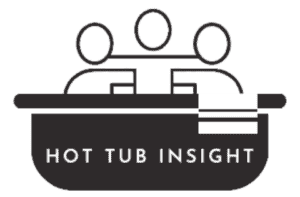This post contains affiliate links.
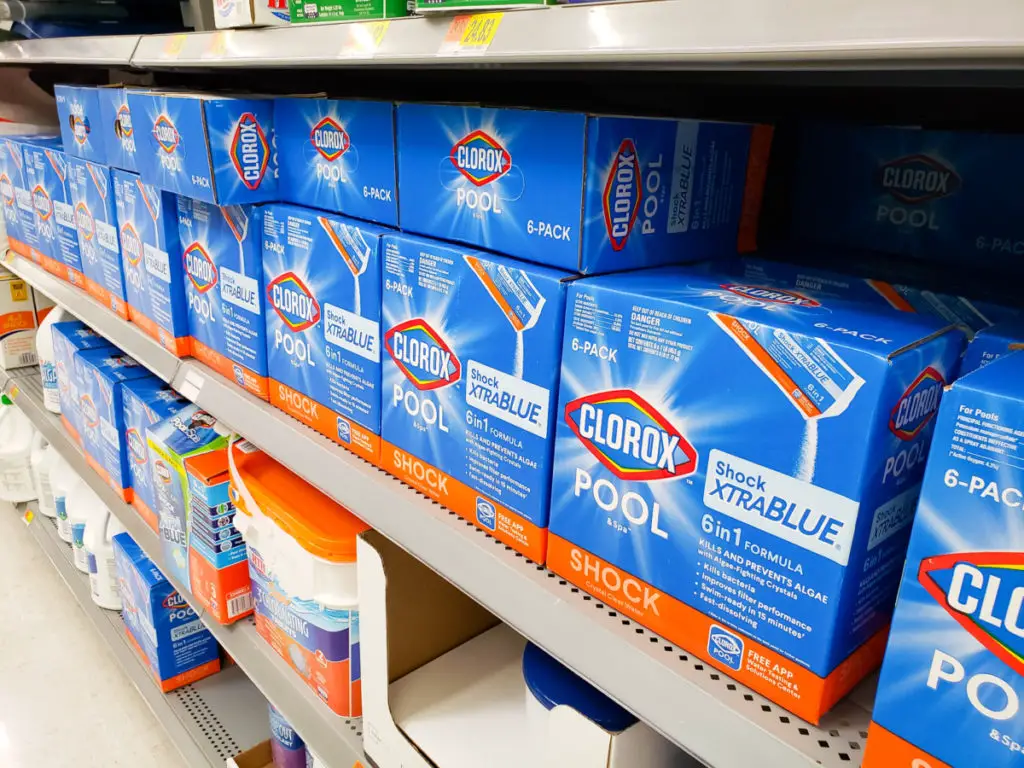
There are hundreds of catchy named hot tub chemical products that are marketed to solve specific problems that you may face during hot tub ownership. Do you need to use products that are specifically labeled for hot tubs or will chemicals you have around the house serve the same purpose?
There are numerous household items that you can use to maintain your hot tub. Items such as vinegar, baking soda, and chlorine bleach can all be used to replace specifically labeled products to maintain your hot tub.
What other household items can you use? You may be surprised to learn that there are many common household items that can be used in your hot tub. The real question is, will this save you any money? I will break it down for you.
What Are Common Hot Tub Chemicals?
When you have reached a state of hot tub nirvana, you shouldn’t need to mess with your hot tub’s water chemistry very much. Adjusting the pH and sanitizer levels when needed and a good filter cleaning and shocking routine should keep your hot tub fresh and ready to go.
While that is all you “should” need, there are going to be times when something is just off. And that is ok! We have all been there.
So what are some common hot tub chemicals?
Sanitizer
Sanitizers are essential for keeping your hot tub water clean and safe. The two most common types are:
Chlorine:
- Usage: Chlorine is a widely used hot tub sanitizer that effectively kills bacteria and other contaminants.
- Personal Note: I prefer chlorine because I’ve had adverse skin reactions to bromine.
- Household Alternative: Bleach (sodium hypochlorite) can be used as a chlorine substitute. Typically, 3 oz of bleach (assuming 6% dilution) can sanitize a 500-gallon hot tub.
Bromine:
- Usage: Bromine is another popular sanitizer, known for being gentler on the skin and maintaining stability in higher temperatures.
- Personal Note: Despite its benefits, I avoid bromine due to personal skin sensitivities.
- Household Alternative: Unfortunately, there isn’t a straightforward household alternative for bromine.
Shock
Shocking your hot tub is an essential process to maintain clean and clear water by removing contaminants through oxidation. There are two main types of hot tub shock:
Chlorine-Based Shock:
- Common Product: Dichlor shock is the most commonly used chlorine-based shock.
- Usage: This type of shock is effective at quickly raising the chlorine level in your hot tub, which helps eliminate bacteria and organic contaminants.
- Benefits: It’s a powerful sanitizer that works rapidly to keep your water clean.
Non-Chlorine-Based Shock:
- Common Product: The most common non-chlorine shock is an oxygen/potassium derivative, abbreviated as MPS (Monopersulfate).
- Usage: Non-chlorine shock works by oxidizing contaminants, making them easier to filter out.
- Benefits: Ideal for people who are sensitive to chlorine, it helps maintain water clarity without increasing chlorine levels.
For a more detailed guide on shocking your hot tub, check out my comprehensive article.
Alkalinity and pH Adjustment
Maintaining the correct alkalinity and pH levels is crucial for hot tub water balance. Here’s how you can adjust these levels effectively:
Understanding Alkalinity and pH:
- Interrelationship: Adjusting the pH in your hot tub will also impact the alkalinity and vice versa.
- Buffering Effect: Alkalinity acts as a buffer for pH, meaning that significant changes in alkalinity will influence pH stability.
Adjusting Alkalinity:
- High Alkalinity: If your alkalinity is too high (like my tap water, which has an alkalinity close to 300), you’ll need to lower it before you can effectively adjust the pH.
- Lowering Alkalinity: Use sodium bisulfate to lower both alkalinity and pH levels.
- Increasing Alkalinity: Use sodium bicarbonate (baking soda) to increase alkalinity with a minor impact on pH.
Adjusting pH:
- Low pH: To increase pH (and alkalinity), use sodium carbonate (washing soda).
- High pH: To lower pH, sodium bisulfate is effective.
Practical Tip:
When adjusting your hot tub chemicals after a fresh fill, it can be challenging to balance the pH due to high initial alkalinity. If you are like me and have high alkalinity coming out of your tap, you will need to drop the alkalinity significantly first, then fine-tune the pH to reach the desired level.
Your levels should be within the range below:
- Alkalinity: 80-120 ppm
- pH: 7.2 – 7.8
Metal Sequester
Using a metal sequester is essential for preventing metal stains and damage in your hot tub. Here’s what you need to know:
Purpose of Metal Sequester:
- Prevent Stains: Metal sequester products prevent dissolved metals in the water from staining the hot tub surfaces.
- Protect Surfaces: They also protect the acrylic shell of your hot tub from damage caused by metal oxidation.
How Metal Sequesters Work:
- Chelators: Most metal sequesters use soluble metal chelators, which are binding agents that suppress chemical activity.1
- Binding to Metals: The chelators bind to metal ions in the water, preventing them from being oxidized.
- Preventing Oxidation: Oxidation of metals, such as iron, creates rust stains that can permanently damage your hot tub. By binding to these metals, chelators prevent this oxidation process.
Importance:
- Long-term Maintenance: Regular use of a metal sequester can help maintain the aesthetic and structural integrity of your hot tub.
- When to use: Add a sequester product after a fresh fill, especially if your water source is well water.
- Cost-Effective: Preventing stains and damage can save you money on potential repairs and replacements.
Foam Reducer
Foam in your hot tub can be a common issue, but it is manageable with the right approach. Throughout my years of hot tub ownership, I have had to deal with this issue from time to time. Here’s how I tackle foam effectively:
Common Causes of Foam (My personal experience):
- Soaps and Lotions: Soaps, lotions, and other products brought into the hot tub by users are the most common causes of foam. Encourage guests to shower or rinse off before entering the hot tub to reduce this cause.
- Water Chemistry: Improper water balance can also lead to foam due to high organics and poor sanitizer effectiveness. Ensure your water chemistry is properly balanced to minimize foam.
- Dirty Filters: Dirty or clogged filters can contribute to foam. Regularly clean and maintain your filters to prevent this issue.
- Old Water: Sometimes, the water simply needs to be changed. Over time, contaminants can build up, leading to foaming. See my personal tip is to go longer between fills.
Using a Foam Reducer:
- Silicone and Non-Silicone Products: Foam reducers are available in both silicone and non-silicone forms. These products quickly break down existing foam and temporarily prevent additional foam from forming by coating the water surface.
- Example: A simple analogy is adding cooking oil to a boiling pot of water to prevent it from bubbling over.
Steps to Resolve Foam Issues:
- Check Water Chemistry: Ensure your water is balanced and sanitizer levels are adequate. Balanced water chemistry usually resolves foaming issues.
- Clean Filters: Regular filter maintenance can prevent foam buildup.
- Use a foam reducer: Many products, including my DIY product, are available.
- Drain and Refill: If the above does not resolve the issue, you might need to drain your hot tub and start with a fresh fill.
Pro Tip:
For a step-by-step guide on changing a filter and maintaining optimal water balance, check out my guide to changing a filter. This can help you extend the life of your hot tub water and save money in the long run.
Water Clarifier
Cloudy water in your hot tub can be frustrating, but a water clarifier can help restore clarity. There are two main types:
- Chemical Clarifiers: These products work by binding to contaminants, causing them to clump together. This makes it easier for your hot tub filter to trap and remove them.
- Enzyme-Based Clarifiers: Alternatively, enzyme-based clarifiers break down organic contaminants more naturally. They help maintain water clarity by breaking down oils, lotions, and other organic materials that can cloud your hot tub water. See some examples below.
What Household Items Can Replace Hot Tub Chemicals?
1. Bleach

Cost: $4-$5 per gallon (9-12 cents per 3 oz use)
Yearly Savings: Significant!
Uses: Sanitizer, Chlorine Shock
Bleach is Sodium Hypochlorite or in other words chlorine in its pure form. In general, bleach bought in the store is diluted down to 6-8% sodium hypochlorite. In general, this means you will need about 3 oz of bleach (assuming 6% dilution) to bring a 500-gallon hot tub from 0 ppm to 3 ppm of free chlorine.
Benefits:
- Inexpensive compared to granular chlorine
- Don’t have to worry about CYA
2. Baking Soda
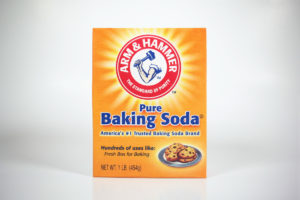
Cost: $0.50-$1.00 per lbs
Yearly Savings: Significant!
Uses: Alkalinity Increaser, Foam Reducer (with Vinegar)
Baking Soda is sodium bicarbonate which is the same chemical in spa-branded Alkalinity Increasers. The conversion is generally 1:1 between baking soda and spa-branded products assuming they are 100% sodium bicarbonate.
Benefits:
- Inexpensive compared to Alkalinity-Up
- Easy to find in stores
3. Washing Soda
Cost: $1-2 per lbs
Yearly Savings: Significant!
Uses: Alkalinity Increaser, pH Increaser
Washing Soda is sodium carbonate which is the same chemical in spa-branded pH Increasers. The conversion is generally 1:1 between washing soda and spa-branded products assuming they are 100% sodium carbonate.
Benefits:
- Inexpensive compared to pH Increaser
4. Vinegar
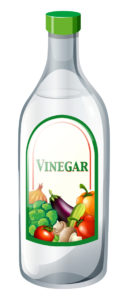
Cost: $2-$3 per gallon
Yearly Savings: Depends on the use
Uses: Foam Reducer (with Baking Soda), Cleaning agent
Vinegar is a great natural cleaner. Using it to clean your hot tub is a perfect way to avoid harsh chemicals and potentially save some money in the process. For spot cleaning a 1:1 ratio of vinegar to water works wonders.
Benefits:
- Easy on hot tub surfaces and your skin
- Natural foam reducer
How To Make A DIY Foam Reducer
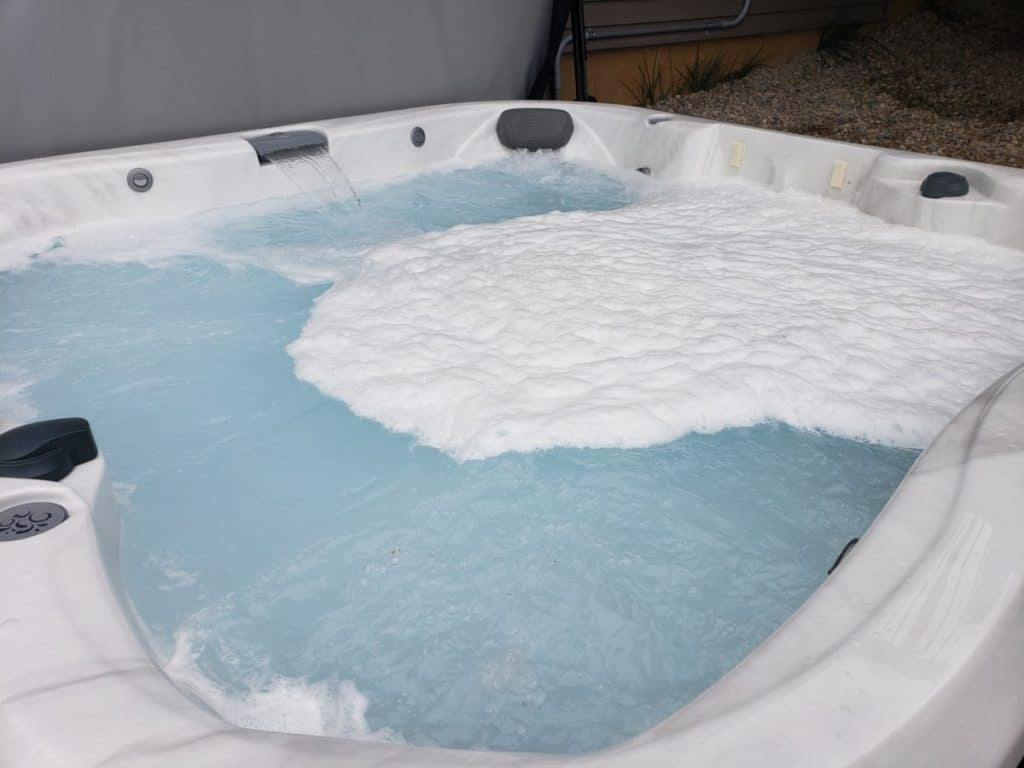
Foam in a hot tub can be an annoyance. Even if the water is perfectly maintained it can give the perception that the hot tub is dirty. There are a lot of products on the market that will help temporarily reduce foam and if you aren’t the DIY type then I would get something like this foam reducer.
If you want to try a DIY solution, follow the very simple guide below. I hope you find it helpful!
What you need:
- Resealable Bottle
- Vinegar
- Baking Soda
- Tap Water
Steps:
- Fill a gallon jug with 90 oz of water (11.25 cups)
- Add 10 oz of baking soda
- Mix until all the baking soda has dissolved
- Add 20 oz (2.5 cups) of white distilled vinegar to the water and baking soda mix
- Mix until fully combined.
If you want to scale the recipe yourself here is the ratio: 2 parts vinegar to 1 part baking soda to 9 parts water.
Use Instructions:
Add a capful or 1 tablespoon to your hot tub water at a time with the jets running until the desired effect has been achieved (a.k.a the foam is gone).
Can A Hot Tub Be Truly Chemical Free?
No, a hot tub cannot be completely chemical-free. In general, to be safe for use, a hot tub must maintain a low level of sanitizer between 0.5 to 3.0 ppm if using chlorine. However, with supplemental products and discipline, the chemical level can be kept as close to the low end as possible.
I was a competitive swimmer in a past life, so I spent more hours a day in a pool than I did sleeping. Waking up at 4 am 6 days a week so I could take the cold plunge into our training pool for morning practice was something I used to live for. Not really, I hated the early morning practices, but I loved the sport so I put up with the schedule.
Because I was in the water so much I quickly realized that I was extremely sensitive to chlorine and bromine. The pool we trained in was used constantly so naturally it was heavily dosed with chemicals to keep it clean. What did this mean for me? My skin was miserable during the competitive season which ran from October through February. I had severe eczema breakouts, which at times were all over my body and I eventually started using an inhaler because I was so sensitive to the gasses coming off of the pool.
The whole point of this story is to say that I completely understand the want and desire to find a chemical-free solution to water maintenance. Here are a few ways you can get as close as possible to a chemical-free system, coming from a guy who understands what it is like to need a better solution.
Disclaimer: Please make sure that you always follow local laws, regulations, and health requirements when maintaining your hot tub.
Mineral Systems
A mineral system uses what the name suggests, minerals dissolved in the water, to help support your sanitizer so it can be more efficient at sanitizing which means you will need less of it. These systems are great because they allow you to bring your sanitizer level down to 1.0 ppm which is close to drinking water levels. There are a bunch of products on the market but only a few that I will recommend.
Frog @ease
Product Link: Frog @ease
I use this system now and it is by far the easiest system I have used to date. The system contains a mineral cartridge and a sanitizer cartridge. The mineral cartridge only needs to be replaced once every four months or after every fresh fill. The sanitizer cartridge will last up to 4 weeks depending on the size of your hot tub and the frequency of use.
After every fresh fill, you balance your water chemistry like normal then pop in the Frog @ease cartridge and you are good to go. Once a week you can check your water chemistry and adjust pH and Alkalinity as needed (I have found I rarely need to adjust using this system). At the same time, you can check to make sure the sanitizer cartridge isn’t empty. If it is, simply pop in a new one.
This system keeps a constant chlorine level right around 1.0 ppm which has been great on my skin. The only downside is the cost. But for me, the low time investment, convenience, and low chemical levels are worth it.
AquaFinesse
Product Link: AquaFinesse
I have not used this system, but I know there are many people in the industry that absolutely love it. As a mineral system, it uses minerals to change the water properties and make your sanitizer work better. AquaFinesse has the added benefit of making the water feel very soft on your skin. Of the people that use it, this is the #1 remark.
This system is more expensive than the Frog @ease system and does not include a sanitizer cartridge. Meaning, you will have to add your own sanitizer to the hot tub water. With that being said, this system is still a great low chemical alternative with the added benefit of providing a skin-soothing experience.
Nature2
Product Link: Nature2 Mineral Stick
I have used the Jacuzzi branded version of this product in my hot tub. Nature2 is a mineral stick product that uses minerals and silver ions to help sanitize your hot tub water. It is also marketed to help keep your water chemistry balanced. I had trouble with this system, but it was also the first system that I ever used so some of my issues could have been due to my inexperience.
The mineral stick fits inside your filter, or in your filter compartment depending on the brand of hot tub you own. It is good for the life of the water in your hot tub or 4 months. It does not replace a good sanitizer routine so, like the Aquafinesse product, you will still need to add your own sanitizer. It is a relatively inexpensive option that provides some additional benefits and gets you closer to a low chemical system.
Enzyme Systems
An enzyme system is an intriguing product. It provides your hot tub water a boost by using enzymes to break down organic material so that your sanitizer can eliminate them. These systems are able to break down oils, lotions, soaps, and other organics introduced into the water. Because of this unique ability, they should help make your hot tub water last longer. This saves you time and money. Besides, who wants to drain and fill their hot tub in the dead of winter because their water chemistry has gone haywire.
There is only one product on the market that I have heard good things about, so if you are interested in trying this system, the choice is easy.
Spa Marvel
Product Link: Spa Marvel
I have not used this system, but it is a fascinating science to me so I will definitely be trying it out for myself. As mentioned above, Spa Marvel is an enzyme system, so it breaks down organics in the water through the use of enzymes. Their system includes a water treatment/conditioner, cleanser, and filter cleaner.
The water conditioner (enzyme solution) does the brunt of the heavy lifting and needs to be added once every 3 months. The beauty of this system is if your water chemistry and clarity good, then all you need to do is add another bottle of the enzyme solution and you are good for another 3 months. I have heard of users going an entire year on the same water using this system.
The Spa Marvel system will allow you to maintain a very low sanitizer level of 0.5 to 1.0 ppm making it a low chemical alternative.
Salt Water Systems
A saltwater system uses salt to generate chlorine through a process called electrolysis. The benefit of this system is it maintains a constant level of chlorine in the water which helps avoid the typical yo-yo’ing that a traditional manual sanitization process would cause. The stable sanitizer level will, in theory, allow a lower overall level of sanitizer because there is less of an opportunity for nasties to form.
Hot Spring is the largest hot tub manufacturer that sells an onboard saltwater system. Many users rave about this type of system. A salt system still requires proper water chemistry maintenance so it is not completely worry-free, but it can reduce the amount of time you spend maintaining your hot tub.
There are retrofit products available that can convert an existing hot tub into a saltwater system, but a built-in system is probably better. One downside is the replacement salt cartridges can be expensive and under heavy bather loads, supplemental sanitizer may still be needed.
Other Methods
If you are opposed to adding supplemental products to your hot tub or are on a very limited budget, you can still achieve a lower chemical soaking experience using a more traditional water maintenance routine. It will take a bit more trial and error to dial in the right process for your particular situation but with some patience, you will get it down.
The trick? Add sanitizer after your soak in just enough quantity that the next time you want to use the hot tub, the levels have dropped to 1.0 ppm. The general rule of thumb for granular chlorine is 1 tsp per person, but this can vary based on your situation which is why it will take you some time to zone in your exact recipe for success.
This method is by no means foolproof. I used this method in the past and found that if I didn’t use the hot tub often enough, the sanitizer levels would drop too low before my next use which meant I needed to add more between uses. If you use your hot tub daily this shouldn’t be a problem, but if you don’t, you will need to remember to add more sanitizer every few days to maintain a high enough level that the water stays clean.
I eventually grew tired of this constant attention and opted to spend a little extra money to save myself some hassle. That was my choice, and something you will have to decide for yourself. If done properly, this method can work for you.
